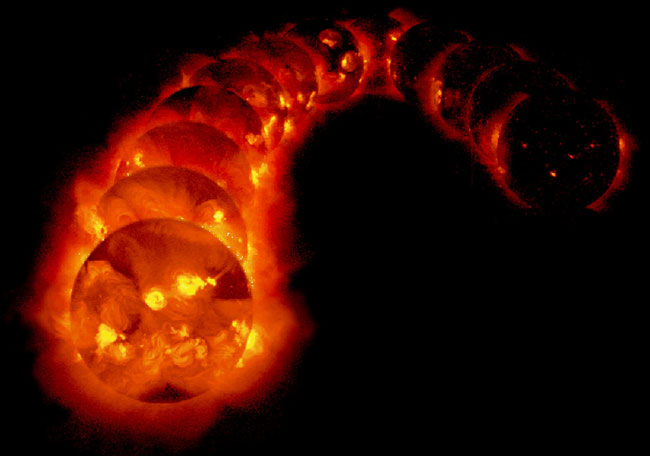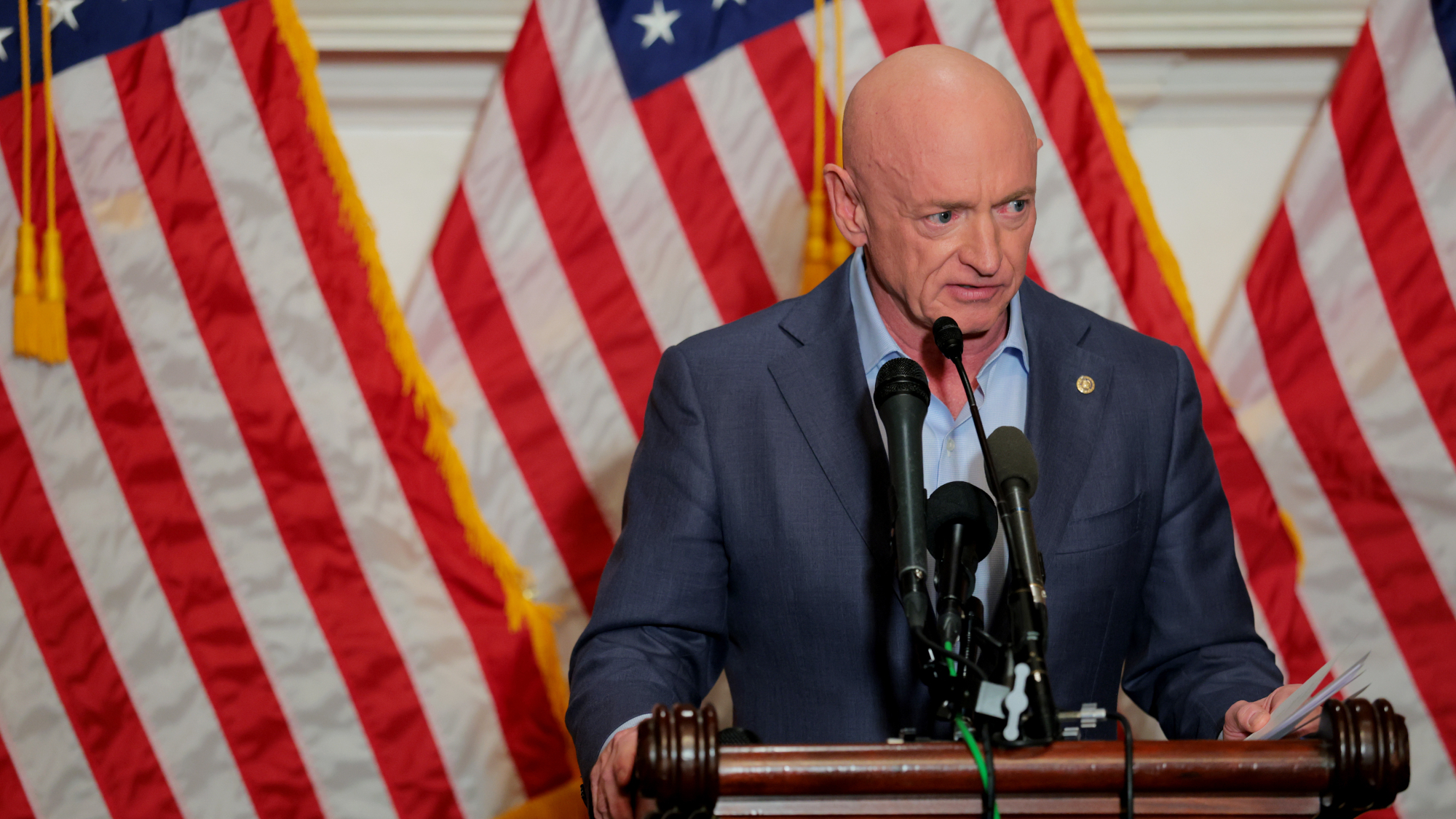Sun's Next Cycle of Fury Delayed

The Sun'snext cycle of solar storms will brew up later than expected, though astronomersare split on just how strong the star's tempests will be.
Initiallyexpected to begin last fall, the Sun's 11-yearstorm season is now pegged to begin in March 2008 and hit its peaknear the end of 2011, according to a new forecast compiled by a panel of solarexperts for the Space Weather Center at the National Oceanic and AtmosphericAdministration (NOAA). The 12-member panel split into two equal camps, one predictinga weak season while the other expects a strong one, though both facets are not anticipatingthe Sun set any new records in coming years.
"By givinga long-term outlook, we're advancing a new field - space climate - that's stillin its infancy," said retired U.S. Air Force Brig. Gen. David Johnson, directorof NOAA's National Weather Service in Boulder, Colorado. "Issuing a cycleprediction of the onset this far in advance lies on the very edge of what weknow about the Sun."
Sunspots, solar flares and intense explosionsknown as coronal mass ejections are hallmarksof the Sun's storm cycle, the latter two belching charged particles at suchextreme intensities that they can interfere with satellite communications,power grids and Earth, and force astronauts in space to take shelter inreinforced areas of their vehicles such as the Russian segments of theInternational Space Station (ISS). The solar storms also amplify Earth'sauroras, or the northern and southern lights, when their charged particlesinteract with the planet's magnetic field.
The Sun'ssolar cycle is measured by its maximum number of sunspots, blemishes that indicatecooler regions of strong magnetic activity. More sunspots hint at the greaterlikelihood of more major solar storms during a given season, though most cyclestend to range between about 75 and 155 sunspots, NOAA officials said.
One half ofthe Solar Cycle 24 panel predicted that the upcoming season could be moderatelystrong, peaking out with up to 140 sunspots, give or take 20, by October 2011. Thepanel's other faction, however, predicted a more serene 90-sunspot maximum,plus or minus 10, for Solar Cycle 24. Those estimates are expected to berefined the first year after the Sun's closing storm season, Solar Cycle 23,NOAA officials said.
"Thepanelists in each camp have clear views on why they believe in their prediction,why they might be wrong and what it would take to change their minds," said NOAASpace Environment Center scientist Douglas Biesecker, who chaired the panel, ina statement.
Breaking space news, the latest updates on rocket launches, skywatching events and more!
Bieseckersaid that despite the panel's division on the Sun cycle's intensity, allmembers have a high confidence that the season will begin in March 2008. Theyrepresent the third panel to predict an upcoming solar cycle, with previousincarnations meeting in 1989 and 1996. Included in the current panel's debate wasthe importance of the Sun's magnetic fields near its poles during the waningyears of previous solar cycles, NOAA officials said.
"We're onthe verge of understanding and agreeing on which precursors are the mostimportant in predicting future solar activity," Biesecker added.
- NASA Releases Stunning New 3-D Views of the Sun
- Gallery: Sun Storms
- VIDEO: Danger! Solar Storm

Tariq is the award-winning Editor-in-Chief of Space.com and joined the team in 2001. He covers human spaceflight, as well as skywatching and entertainment. He became Space.com's Editor-in-Chief in 2019. Before joining Space.com, Tariq was a staff reporter for The Los Angeles Times covering education and city beats in La Habra, Fullerton and Huntington Beach. He's a recipient of the 2022 Harry Kolcum Award for excellence in space reporting and the 2025 Space Pioneer Award from the National Space Society. He is an Eagle Scout and Space Camp alum with journalism degrees from the USC and NYU. You can find Tariq at Space.com and as the co-host to the This Week In Space podcast on the TWiT network. To see his latest project, you can follow Tariq on Twitter @tariqjmalik.
